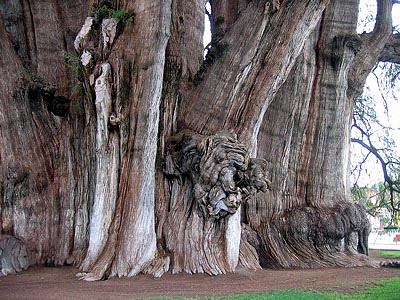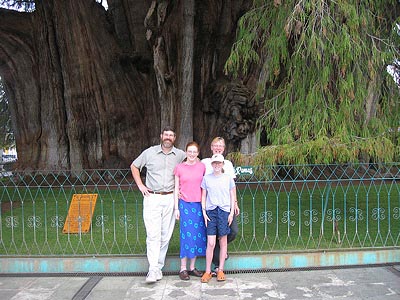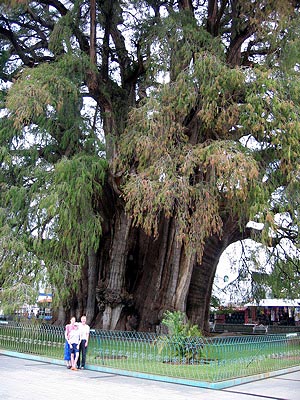The region around Oaxaca is renowned for
the many artisans, and each village seems to specialize in a particular
craft. Radiating out from the city of Oaxaca are three big
valleys. We travelled south and east to many of the nearby
villages, all within 50 km of the city, on several different day trips.

Arrazola
is a small village just to the southwest of Oaxaca (in fact you look
down on it from the ruins at Monte Alban). It is famous for the
whimsical wooden animals called alebrijes that are carved from copal
wood and painted with colorful and intricate designs. Just about
every house in the village seemed to sell them (and nothing else).
But we spent a very enjoyable afternoon marveling at the variety
and abundance of the cute figures.
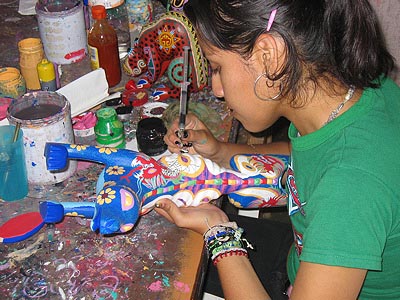
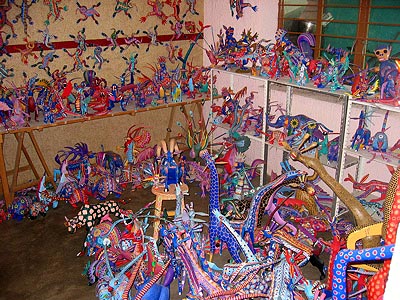
The nearby town of San Bartolo de Coyotepec is known for its unique black pottery.
Notice that this town, like almost all of the others, has both a Spanish name given by the missionaries (San Bartolo) and the Zapotec name (Coyotepec)
Notice that this town, like almost all of the others, has both a Spanish name given by the missionaries (San Bartolo) and the Zapotec name (Coyotepec)
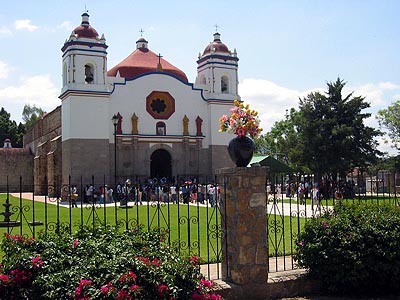
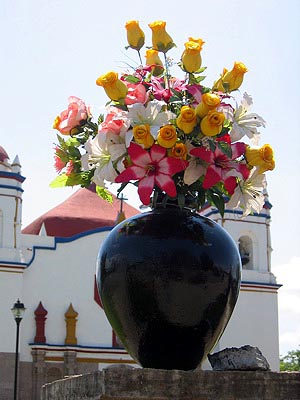
Like many tourists we watched them make a pot the traditional way in the studio of Doña Rosa.
Here is her son turning a pot on a "wheel" that was nothing more than two plates, on on top of the other. He spun it with one hand and formed the pot with his other.
Here is her son turning a pot on a "wheel" that was nothing more than two plates, on on top of the other. He spun it with one hand and formed the pot with his other.
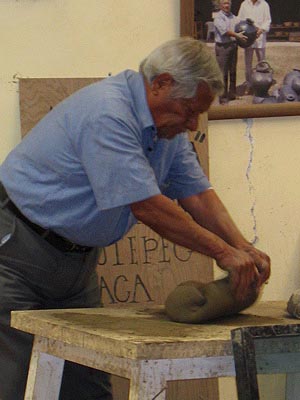
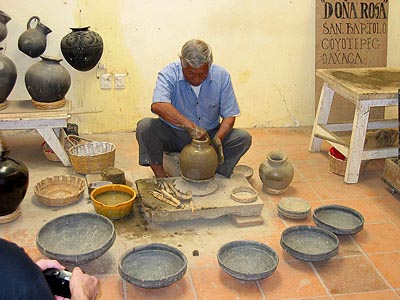
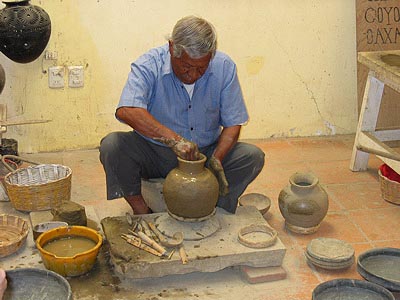
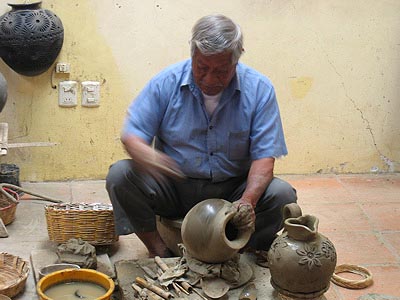
Even the altar in the church was adorned with black pottery.
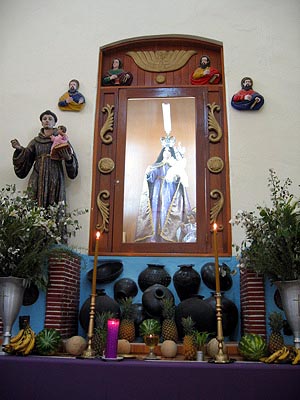
A bit further south is the town of Cuilapan where we wandered around this amazing (unfinished) church and monastery.

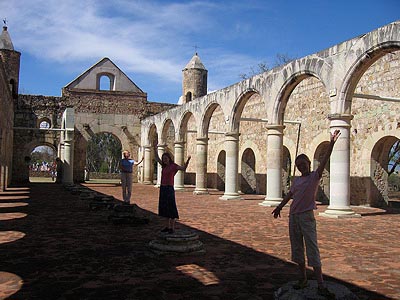
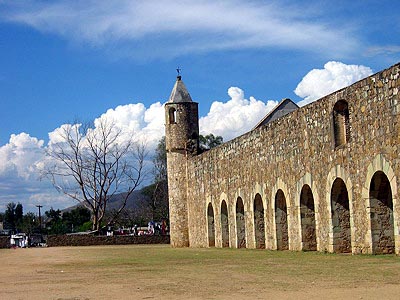
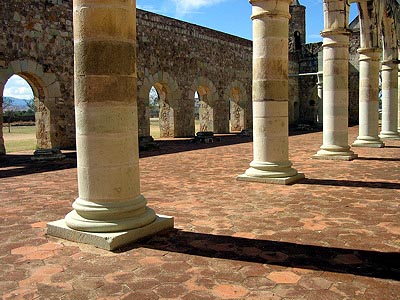
Mezcal
Mezcal distilleries are common in many
of the valleys around Oaxaca. Much like tequilla it is distilled
from agave, but usually from a different species. People
around Oaxaca will tell you that mescal is the real drink and tequilla
is the derivative (though people in Jalisco may disagree). We
toured this distillery near the town of Tlacolula. It turned out
to be a fascinating tour where we saw how the hearts of the maguey were
cooked in giant pits, crushed, fermented, and finally distilled.
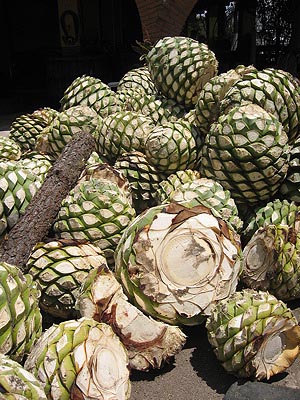
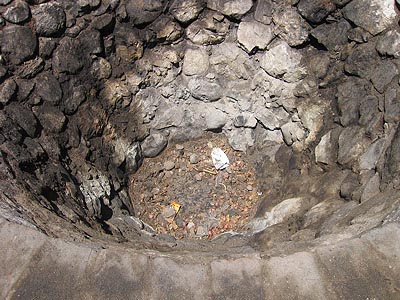

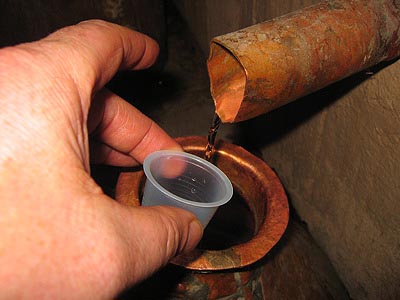
I'm still not sure how we survived the
tasting afterward, but I was impressed by how different the different
types could be. I was somewhat distressed to find that the
delicious smoky taste comes not so much from the wood fires that were
used to cook the maguey, but rather from the worm in the bottle . . .
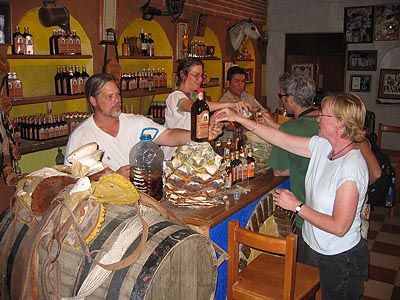
Mitla- home to the earliest maize
Pictures from the ruins at Mitla are on another page.But one of the other things about the town is that this is probably the area where corn was domesticated. In a cave in the hills around here they found seeds of maize that are about 9000 years old. If we had had more time I would have loved to go find that cave . . .
Pictures from the ruins at Mitla are on another page.But one of the other things about the town is that this is probably the area where corn was domesticated. In a cave in the hills around here they found seeds of maize that are about 9000 years old. If we had had more time I would have loved to go find that cave . . .
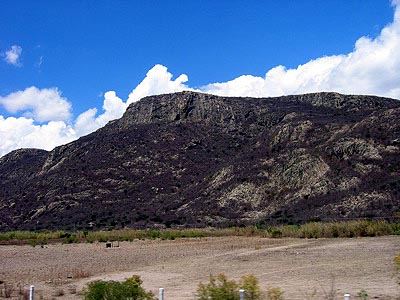
We also liked the little three-wheeled taxis that were in many of the villages in the Valles Central.
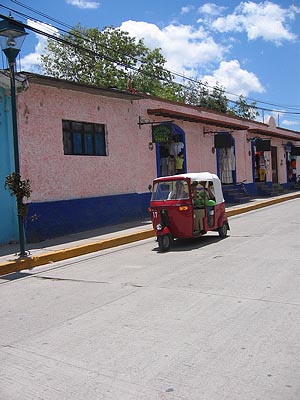
Teotitlan del Valle
is famous for its woven wool rugs. Many of the artisans pride
themselves for using all natural dyes and we saw various exhibitions of
the dye making process.
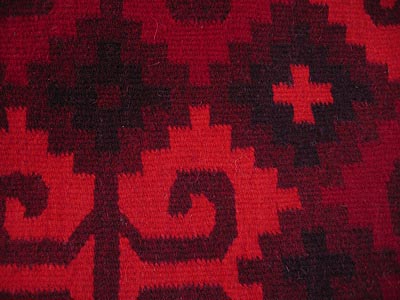
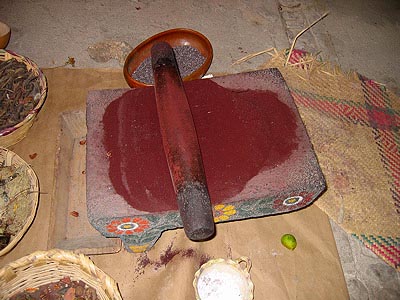
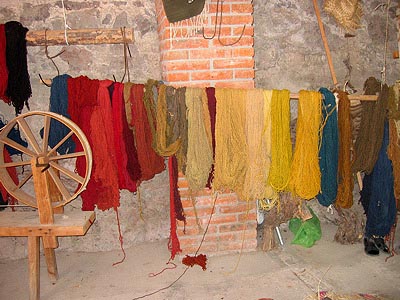
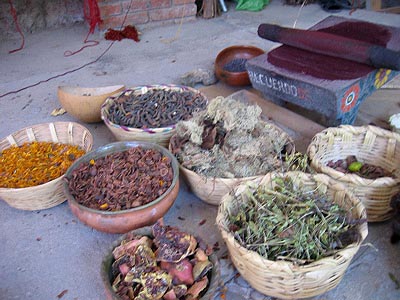
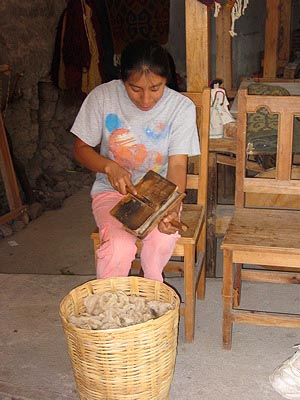
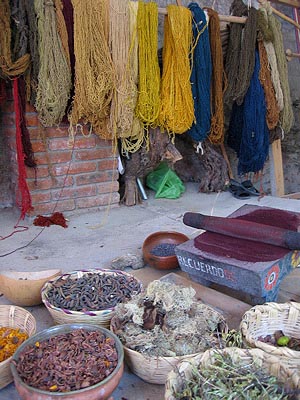
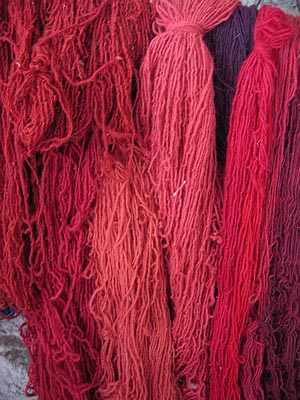
Marigold petals for yellows and oranges; the shells of nuts for browns:
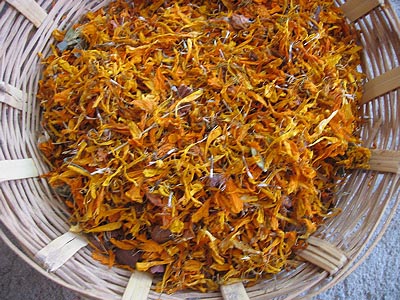
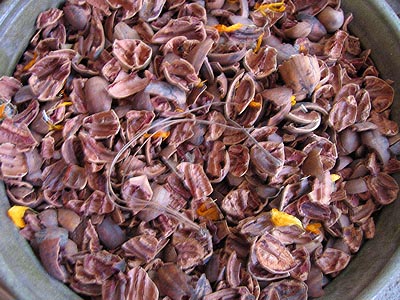
The outer fruit wall of pomegranites for pale yellow and brown:
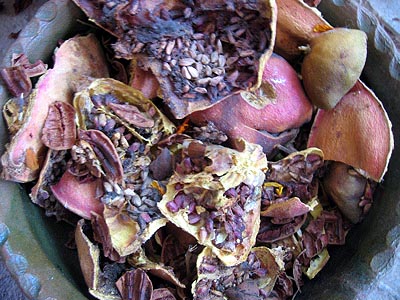
Boiling the yarn over a wood fire with plant parts
for coloring:
for coloring:
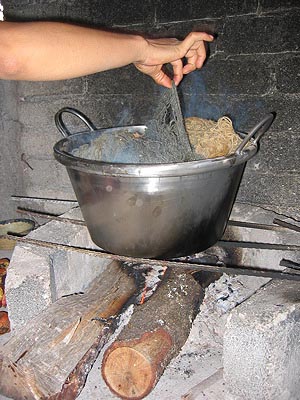
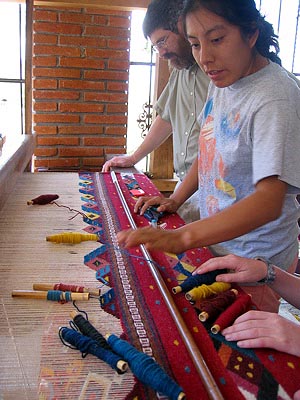
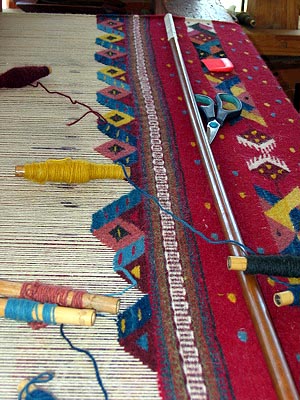
If a dog is within a mile of us, we'll find him. This time it was a puppy named Lucas. Here he is sitting on top of rugs that cost hundreds of dollars:
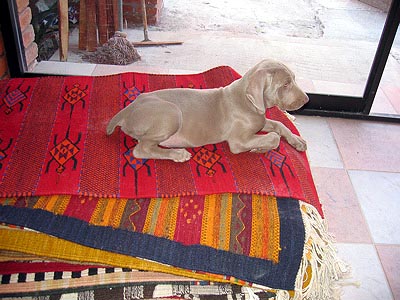
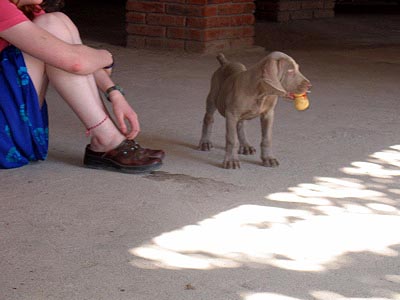
One of the most important natural dyes
is the cochineal bug, an insect that lives on the nopales or prickly
pear cacti that are so common in Mexico. For a long time it was one of
the only reliable natural red dyes and they exported tons of the bugs
from Mexico to Europe. Now of course there is red dye #1 and many
more. But people in Teotitlan still raise the bugs and harvest
them to make the dye for their yarns. A bit of lime juice (as
well as the calcium type of lime) will change the shade of red to the
desired color.
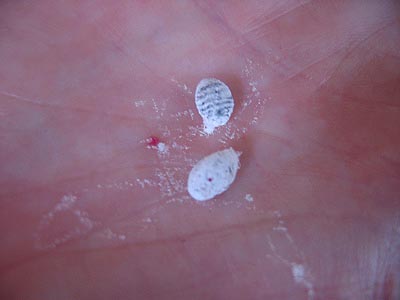
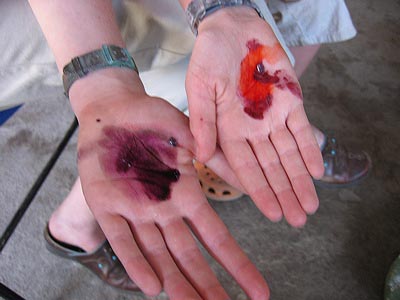
They collect the pads of the cacti and
either hang them or "plant" them in a little sand. They then put
a small basket of bugs on the pad and let them reproduce and colonize
the pad. Each white cluster below is one adult bug, pictured
above.
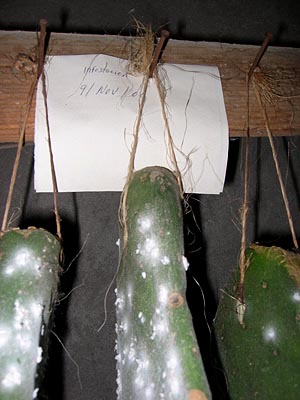
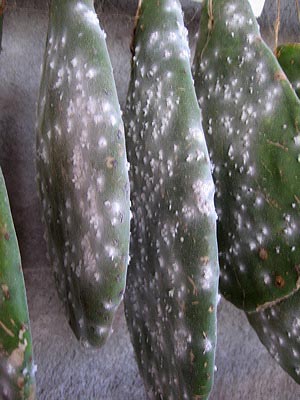
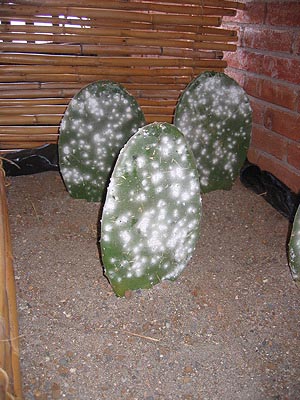
The bugs are dried and ground into a red dye.
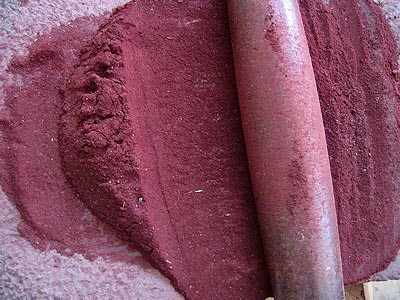
More pictures from Teotitlan:
The giant, tile-lined kitchen of a
restaurant:
Here we
are with our "stash" from the day of shopping:
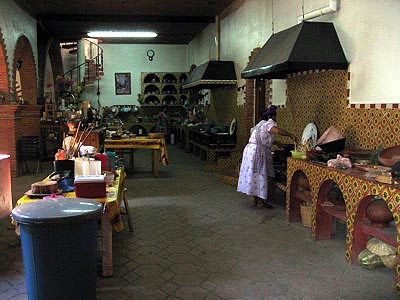
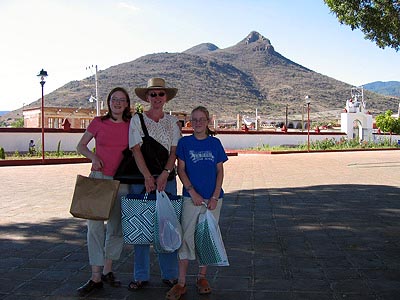
Santa Ana del Valle is another town known for weaving. Unfortunately the day we were there was a holiday, so not much was happening.
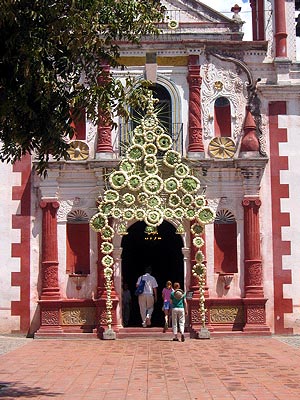
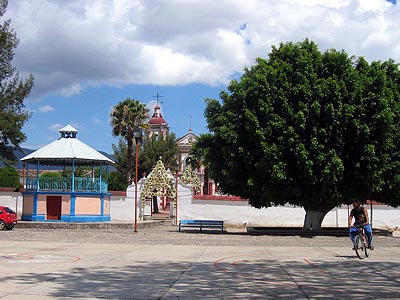
San Jeronimo de Tlacochahuaya, near Teotitlan, had a pretty amazing church with an intricately painted ceiling and a nice old organ.
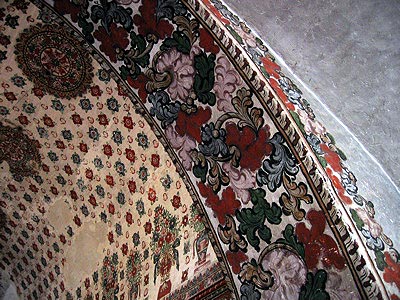
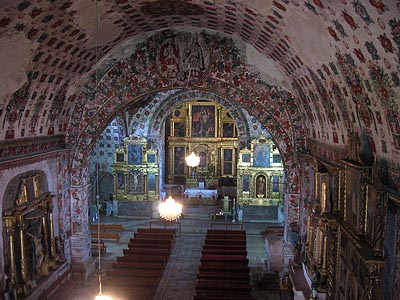
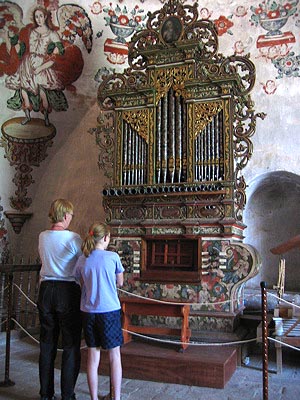
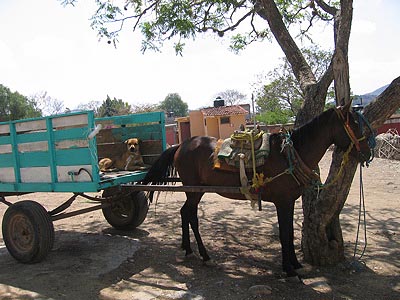
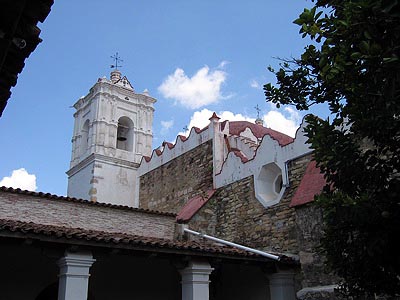
We enjoyed the sunday market in Tlacolula. Though by this time we have seen many markets in Mexico, that was one of the more interesting ones.
Ladies mixing the corn meal drink
with their hands:
Slices of watermelon cooling on ice:
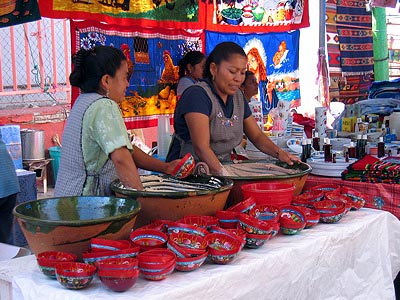
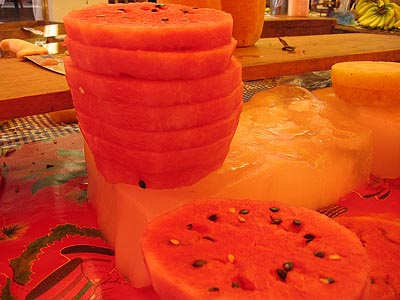
Live turkeys waiting to be sold:
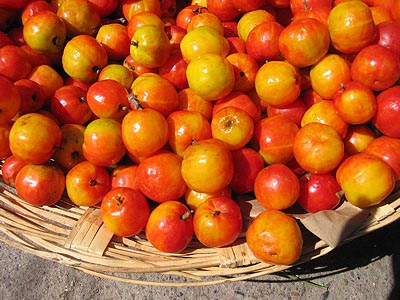
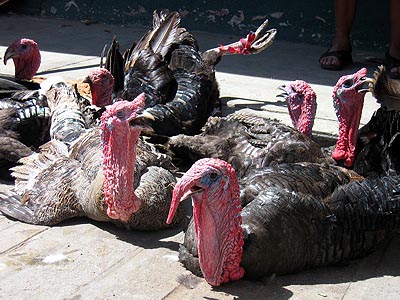

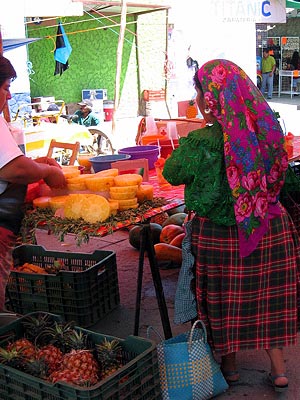

Waiting for the bus in Tlacolula:
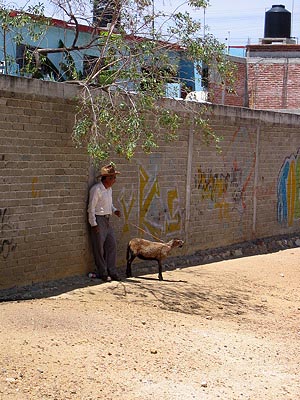
Church in Tlacolula
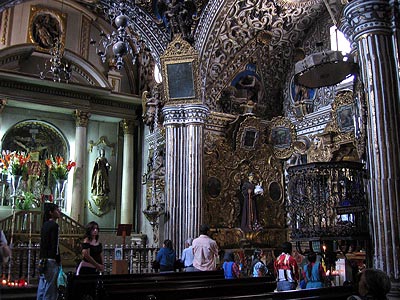
This is one of the most human statues of Jesus that we've seen: he is weary and sad, pondering his fate:
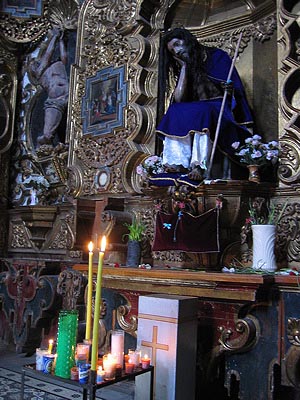
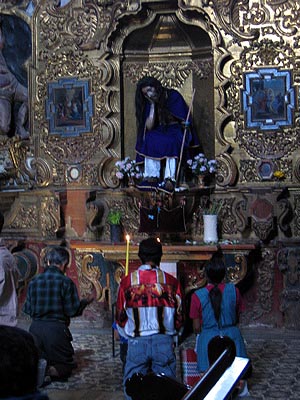
Finally, there is the big tree in Santa Maria del Tule. It is truly enormous! (especially in a dry valley that barely has any forest).

